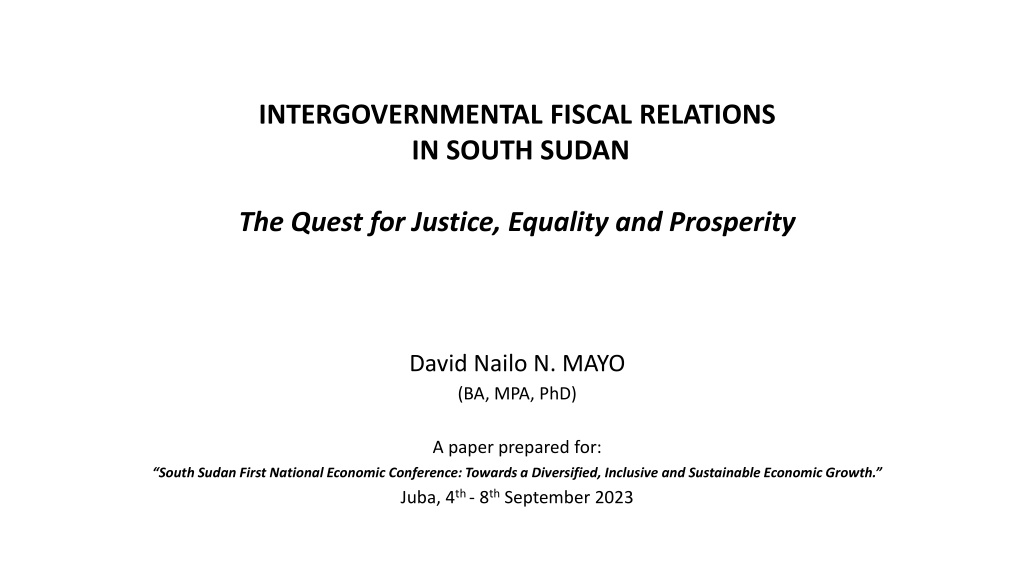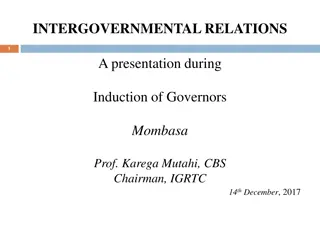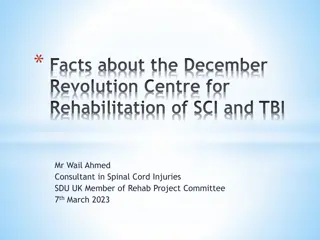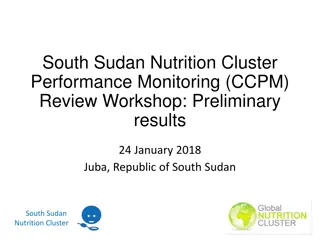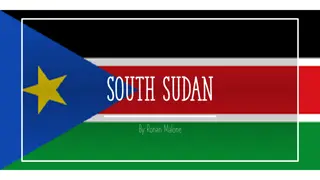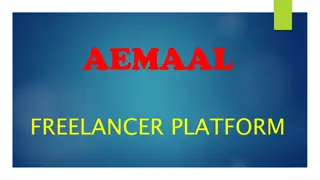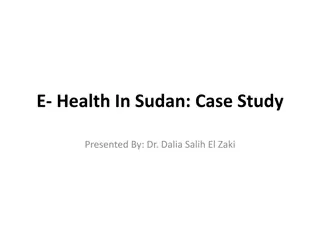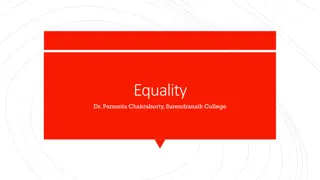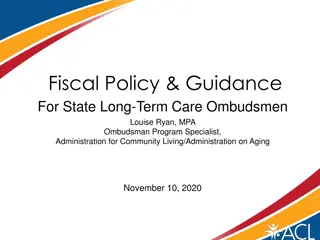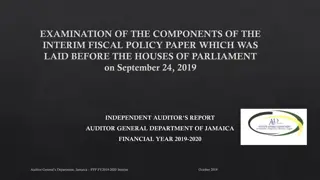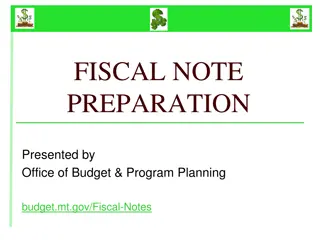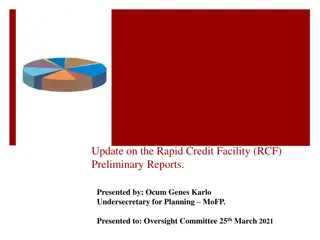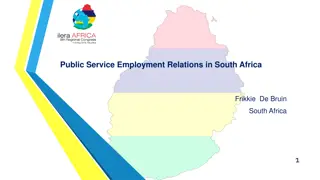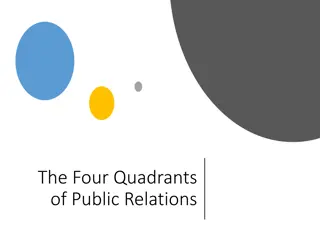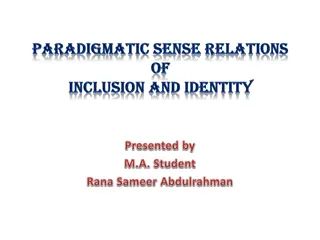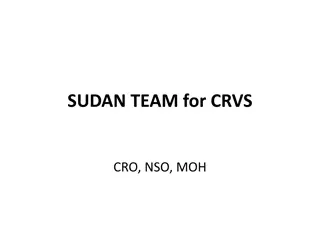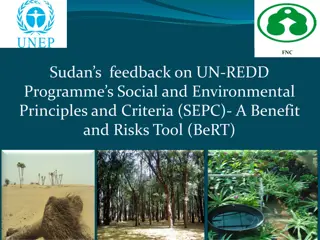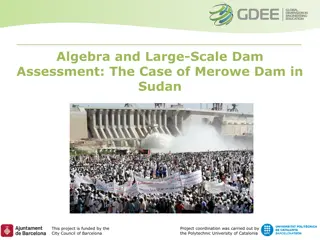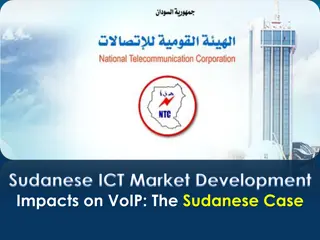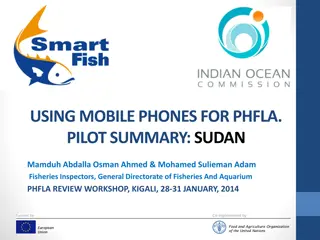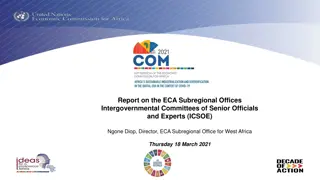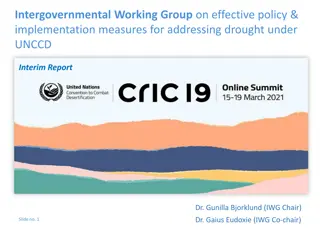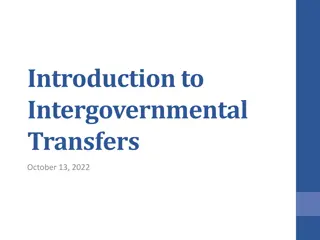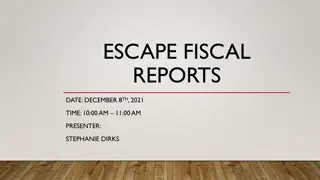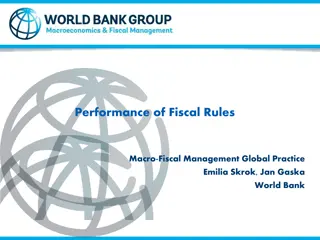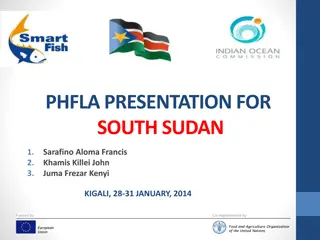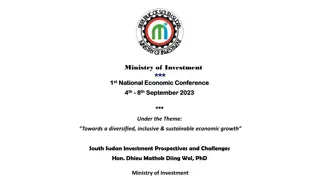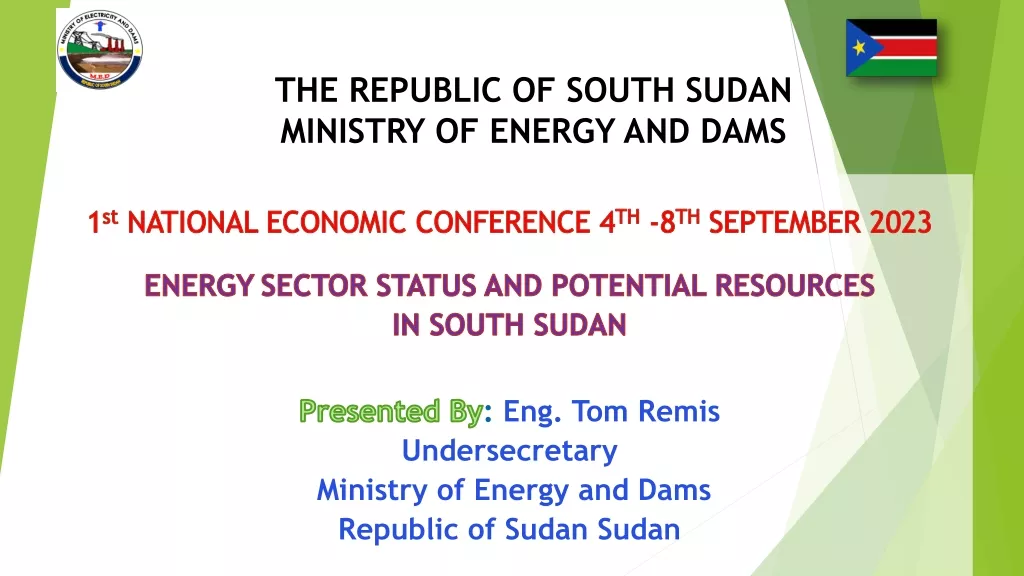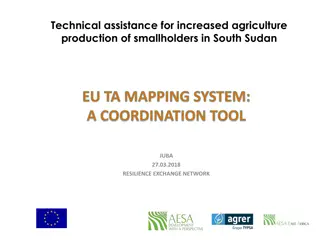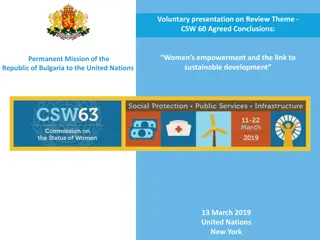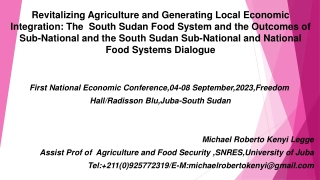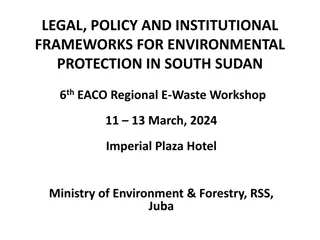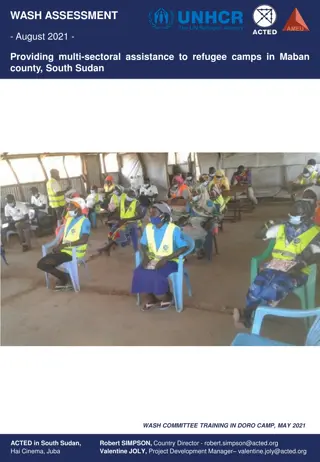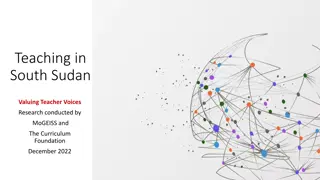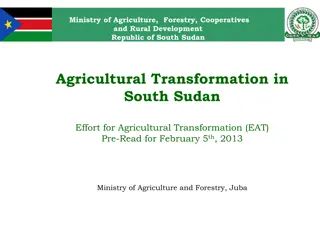Intergovernmental Fiscal Relations in South Sudan: A Quest for Justice, Equality, and Prosperity
This paper explores intergovernmental fiscal relations in South Sudan, focusing on decentralization, taxation, spending, grants, equalization, and transfers to oil-producing states. It discusses the importance of fiscal federalism, the evolution of decentralization in Sudan, and the country's dependence on oil revenues post-independence in 2011.
Download Presentation

Please find below an Image/Link to download the presentation.
The content on the website is provided AS IS for your information and personal use only. It may not be sold, licensed, or shared on other websites without obtaining consent from the author. Download presentation by click this link. If you encounter any issues during the download, it is possible that the publisher has removed the file from their server.
E N D
Presentation Transcript
INTERGOVERNMENTAL FISCAL RELATIONS IN SOUTH SUDAN The Quest for Justice, Equality and Prosperity David Nailo N. MAYO (BA, MPA, PhD) A paper prepared for: South Sudan First National Economic Conference: Towards a Diversified, Inclusive and Sustainable Economic Growth. Juba, 4th - 8thSeptember 2023
Presentation Outline 1. Introduction 2. Intergovernmental Fiscal Relations 3. Decentralizing Taxation 4. Decentralizing Spending 5. Bureaucratic atrophy and Inertia 6. Types of Grants 7. Vertical Equalization 8. Horizontal Equalization 9. Transfers to Oil Producing States and Communities 10.Conclusion
Introduction Decentralisation, as a sub-set of federalism and not an alternative to it, shares many features with a federal system in the assignment and distribution of powers between a Union Government and Sub-National Units. Indeed, one of the most important pillars in a decentralised or federated governance system is the Fiscal Federalism i.e. the modalities of: (1) Wealth sharing between the national government and subnational governments (vertical distribution formula); (2) Equalisation among states (horizontal distribution formula); and (3) Rewarding wealth producing states and communities (derivative formula). However, there are many typologies of federal systems in the world -- some are highly centralised while others are more decentralised and devolve a range of powers to subnational governments. In this context, Grants-in-aid system of financing the states and local governments varies considerably from one country to another. Forsyth, Murray. 1981. Union of States: The Theory and Practice of Confederation. Leicester, Leicestor University Press; Wheare, K. C. 1963. Federal Government. Oxford, Oxford University Press; Hicks, Ursula K. 1978. Federalism: Failure and Success. London, McMillan Forum of Federations. 2005. A Handbook of Federal Countries. McGill-Queen University Press.
Intro Continue. Intro Continue . Decentralisation was chosen in the negotiations in Naivasha between the Sudan People s Liberation Movement (SPLM) and the Sudan Government then against the federal arrangements that the Sudan had displayed. It was the SPLM modus operandi to deny Khartoum the credit of being a federal state as many critics saw the Sudan Government was highly centralised and concentrated power in the centre. According to SPLM leaders, decentralisation devolves and shares political, economic power, and provides administrative autonomy better than quasi federal arrangements then. See, Rohan Endrisianha, Lee Seymour and Ann Griffith, A Handbook of Federal Countries, pp.432-442
Intro Continue. Intro Continue . Since independence on 9 July 2011, South Sudan depended much on oil revenues (which accounted for 98 per cent of the annual budgets) the before the National Revenue Authority Act, 2016 came to contribute a modest proportion to the annual budget. The NRA was established to collect and administer taxes, import and export tariffs, excise duty, fees and user charges. Whereas, the oil revenue administration remained with the Ministry of Petroleum and Nile Petroleum Corporation for upstream operations, and the Ministry of Finance and Economic Planning for control of oil revenues. Decentralisation in South Sudan also demonstrates a striking dualism in its public finance system. There are taxes that are purely belonging to the National Government as seen in Schedule A in the TCSS; while some taxes are devolved and assigned to the states (Schedule B) and Local Government Councils are granted their own sources of finance, as detailed in Sections 70-78 of the Local Government Act, 2009. Furthermore, Schedule C, assigns concurrent or interjurisdictional powers to both national and States.
2. Intergovernmental Fiscal Relations 2. Intergovernmental Fiscal Relations
Intergovernmental continue.. Intergovernmental continue .. Objectives of Grants-in-aid System Grants-in-aid system may have grown out of pure attempts to reach out at the needy individuals in the land. But later on, the federal government outweigh its own philanthropy and it became a coercive instrument of federal policy. The following illustrations may be helpful guideposts: Financing the fiscal gap: as the national government traditional seized big tax bases that generate more revenue than the states, the fiscal gap had to be financed through additional funds from the national government; Provision of equitable development, regional convergence and maintaining national cohesion: this objective meant that grants-in-aid was a glue to social cohesion and nationhood among the first generation of federal states (USA, Switzerland, Canada, Australia) as it is today; Enforcing the Union Pact (Sticks and Carrots): Grants-in-aid system was also an instrument of controlling states and local governments against any whims of leaving the union; Correcting and harmonizing federal with state laws: The American Civil War (April 12, 1861 April 9, 1865) had ended slavery through the Thirteenth Amendment to the U.S. Constitution that abolished slavery[on 18 December 1865]. But it didn t end equal but separate racial divide in the mainstream American social fabric. Federal grants- in-aid, especially in the 1960s, was the instrument used to enabled blacks and minorities to enter and learned in the predominantly white only schools and colleges, and better homes for racial minorities. Seeing from the posterior, this was actually the Growth of Federal Power from the original union of equal and sovereign states into an increasingly giant Leviathan infringing upon the states rights. As by 1960s, grants-in-aid became a peaceful instrument for solving the Civil Rights Unrests when African Americans fought to tear down the barriers of equal but separate civic rights. Grants-in-aid was partly the stick necessary to create law and order. Indeed, federal grants became coercive instruments to enforce racial equality between blacks and whites, Hispanics and White Americans, native Indians to ensure and guarantee educational opportunities for the minorities, etc., which were otherwise resisted by the mainstream American social fabric.
3. Decentralizing Taxation 3. Decentralizing Taxation South Sudan has decentralised taxation powers to states and local governments (as seen in Schedules B) and in Local Government Act, 2009. The objective of assigning certain taxes to the lower level governments was to make them responsible for collecting their own revenues without having to overtly rely on transfers from Juba.
4. Decentralizing Spending 4. Decentralizing Spending South Sudan has also decentralised spending powers by assigning such powers and responsibilities to the three tiers of government (as summarised in Schedule A, B, C, and D respectively) and the local government councils are guaranteed both national grants (County Grants) and the Local Government Finance, as stipulated in Sections 73 - 79 of the Local Government Act, 2009. The main objectives of decentralising expenditure responsibilities are: (1) it allows subnational governments to administer their own expenditures; (2) develop efficiency and equity in the delivery of goods and services; (3) empower the subnational governments to make discretion and best choices of projects suitable for them. By assigning responsibilities for spending money must follow those responsibilities to be realised. The author was a member of the committee responsible for drafting and designing Local Government Finance for South Sudan between 2003 and 2004 in Nairobi and Rumbek respectively. Watts, Ronald L., and Rupak Chattopaddhyay. 2008. Emerging Issues in Fiscal Federalism. New Delhi, Viva Books, pp.4-6.
5. Bureaucratic atrophy and Inertia 5. Bureaucratic atrophy and Inertia Criticisms Anwar Shah criticises the behaviour of subnational governments: If subnational governments are not responsible for raising at least some level of their own revenues, they may have too little incentive to provide local public services in a cost effective way. Similarly, if subnational governments are assigned more revenues than their spending requires, they may have an incentive to reduce taxes or increase public sector wages. Hence, corrective measures from federal authorities ought to prevail to induce local governments to follow priorities and realise fiscal efficiency. Moreover, the assignment problem can be mitigated when spending responsibilities precedes the assignment of responsibility for taxing, or it may be desirable to decentralise taxation and spending powers at the same time (Shah 1994, p. 17). Shah, Anwar. 1994. The Reform of Intergovenmental Fiscal Relations in Developing and Emerging Market Economies. Washington DC, The World Bank, p. 17.
6. Types of Grants 6. Types of Grants Block, Unconditional or General Purpose Grants: Block grants are general purpose federal support to state and local governments. It is a budget support to the recipient states which can integrate these grants into state budgetary appropriation. The scholars at the Urban Institute define Block Grants as follows: Block Grants are fixed-sum federal grants to state and local government that give them broad flexibility to design and implement designated programs. Federal oversight and requirements are light, and funds are allocated among recipient governments by formula. Conditional or Earmarked Grants: these grants are restricted to a particular project such as medic-aid, education, or community development projects. Matching Grants: these are also restricted grants because the recipient state must contribute towards the grant in pro rata or according to a particular ratio. For instance, if the State of Eastern Equatoria wants to build a power plant on Kinati River, but it is short of cash, it can apply for a matching grant which the national government could contribute, say two thirds, and Eastern Equatoria contributes one third of the total cost. Discretionary Grants: most funding for scientific research, or the study of particular medical research, geological and seismic research may fall under this category. Other Grants:these are assortment of grants. For instance, Output-based Conditional Grant based on proposed project proposal with expenditure details may fall under these grants. Finegold, Kenneth; Laura Wherry, and Stephanie Schardin. Block Grants: Historical Overview and Lessons Learned . New Federalism: Issues and Options for States. Washington DC, The Urban Institute.
7. Vertical Equalization 7. Vertical Equalization The Local Government Act, 2009 gives the County and Municipal Councils wide area of legislation on taxes, fees and rates. Section 74 addresses the local sources of revenue as follows: Taxes: council property tax, social service tax, council land tax, animal tax, gibana tax, council sales tax, capital gains tax, ushur (produce tax), and any other taxes the authorities may choose to levy within their jurisdiction; Local Rates: user service charges, license fees, administrative fines, royalties; permits, customary court fees and fines, contract fees, auction fees, and other fees.
Vertical Equalization Continue Vertical Equalization Continue Section 75 Community Contributions: the county council may mobilise resources through labour contribution; monetary contributions, and in-kind; Section 76 Grants-in-aid: donations from the national government and donor agencies help the County Councils to raise additional funds for its expenditure. Section 77 Government Grants: County Grants-in-aid comes directly from the national government, and includes the conditional grants, block grants, equalisation grants and state support grants. Section 78 Donor Grants are the same with Section 76 where direct financial assistance from donors in cash or in-kind assistance (building county hospital or clinics, primary schools, etc); and Section 79 permits the county councils to take loans, based on their credit worthiness, for development or investment projects.
Vertical Equalization Continue Vertical Equalization Continue Year Transfers SSP (millions) Per Cent of Budget (%) FY2023/2024 151,163 ---- FY 2022/2023 70,553 FY 2021/2022 50,297 FY 2020/2021 32,696 FY 2019/2020 20,556 FY 2018/2019 17,396 FY 2017/2018 3,669 FY 2016/2017 ----- Table 1:Block Transfers to States and Local Governments
Vertical Equalization Continue Vertical Equalization Continue Problems with Vertical Fiscal Relations There are many problems with vertical relations of sharing wealth in South Sudan, viz: Wealth sharing is not well distributed, mostly eschewed towards the National Government. The latter contributes less than 20% to the states and counties; The States own revenue mobilisation is unknown or not reported in regular budgetary process; State Legislative Assemblies lack capacity to exercise oversight over the executive; and State Governors often operate non-transparent financial system with unreported taxation on natural resources wealth in their jurisdiction; and The Conditional and Unconditional transfers to the states, which were meant to fill the fiscal gap, are very difficult to monitor and assess accurately the unmet needs of individual states. For this purpose, the States may be required to make their annual budgets before the national budget is approved by the National Legislature.
8. Horizontal Equalization 8. Horizontal Equalization These income disparities are directly reflected in differences in revenue-raising power. To the extent that subnational governments are given more independent revenue raising powers, these disparities will widen because the more urbanised local governments have the greatest taxable capacities and the strongest administrative infrastructures. Junghun Kim, Jorgen Lotz and Niels Jorgen Mau (eds.). 2010. General Grants versus Earmarked Grants: Theory and Practice. Seoul, Korean Institute of Public Finance, p.130
Horizontal Equalization Continue Horizontal Equalization Continue Problems of Horizontal Equalisation Problems witnessed in Vertical Relations are also inherent in the Horizontal Equalization, viz: States are unequal in their natural endowments and efforts to mobilise own revenue are likely to differ. Remote poor states suffer from low tax bases; Distances from major cities where commercial activities are taking place is a serious handicap; Topographical difficulties swamps and mountains restrict development in some counties and states; Prevalent rural illiteracy ( 90%) with customary cultural resistance to change; Pastoralism vs sedentary agriculturalists creates communal conflicts that become real barriers to development; and Non-existent or poor road connectivity isolates communities and hindering development.
9. Transfers to Oil Producing States and Communities 9. Transfers to Oil Producing States and Communities South Sudan rewards oil producing states and oil producing communities granting them 2% and 3% respectively for the national wealth produced in those areas. The derivative formula is a percentage that was arbitrarily agreed in Naivasha without the basis of reaching those percentages. The Petroleum Revenue Management Act, 2013, came to redistribute the 3% of the communities share -- granting 55% to the immediate county councils where oil extraction is taking place. And in order to avoid massive migration to oil producing counties, it was agreed that 45% of this 3% should go to the neighbouring non-oil producing counties. To manage these funds, the County Councils concerned have to established Community Development Committees (CDCs), comprised of farmers union representative, women association representative, youth association, faith-based, trade union chambers, traditional authority, civil society organisation, and a co-opted resource person. The CDCs are expected to recruit qualified persons to its executive, people with proven experience, that can draw policies and guidelines on community development and investment projects.
Example of impact of Block Grants Example of impact of Block Grants
10. Conclusion 10. Conclusion Design of grants architecture has been shown to be a necessary for meeting economic objectives of decentralisation in South Sudan, as elucidated in the literature. In concluding this paper, we have seen problems inherent in South Sudan transfer system and policy making efforts for public finance management reforms will be exerted in the following areas: i. Design of a fair grants-in-aid system ii. Policy recommendations on vertical relations iii. Policy recommendation on horizontal relations iv. Policy recommendations on Local Government Finance
THANK YOU GOD BLESS SOUTH SUDAN
